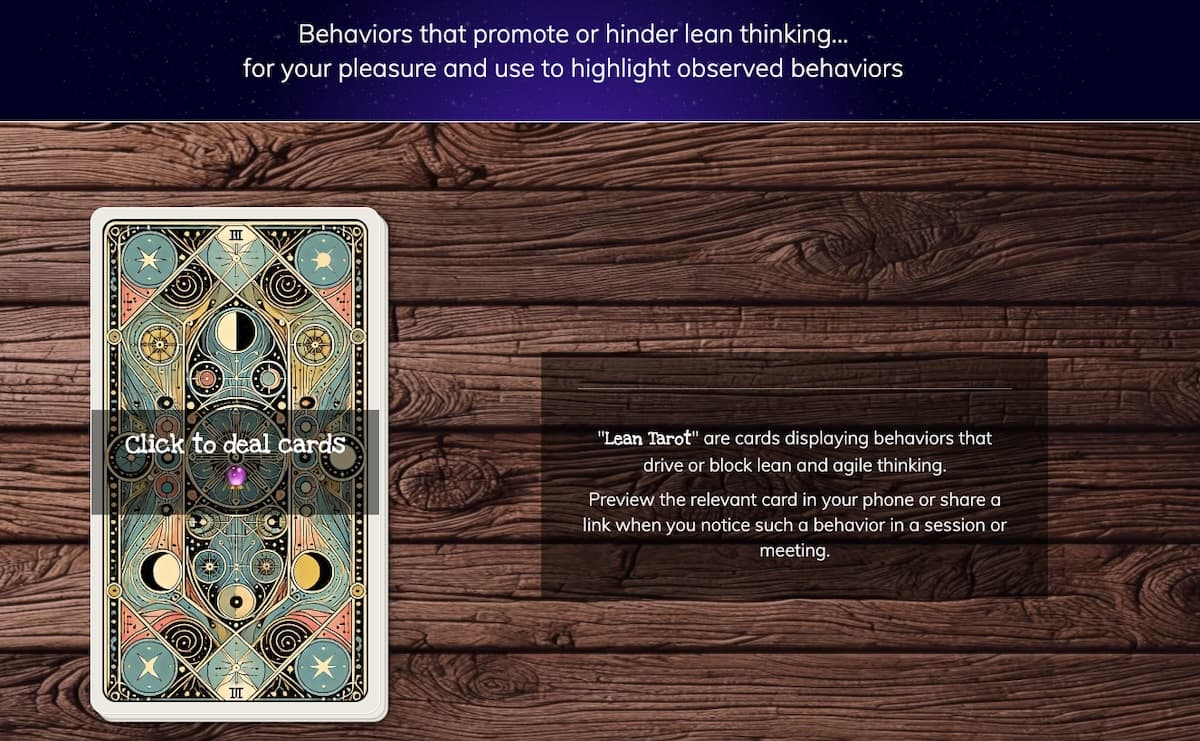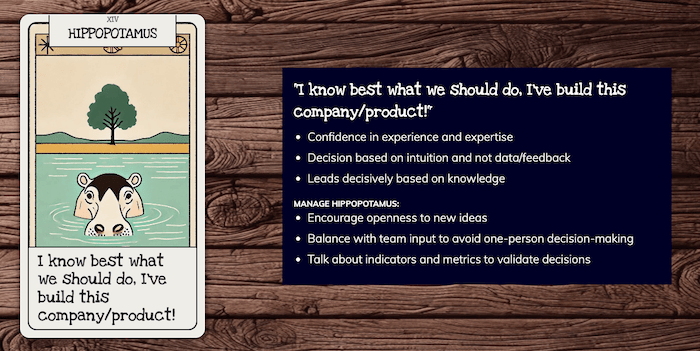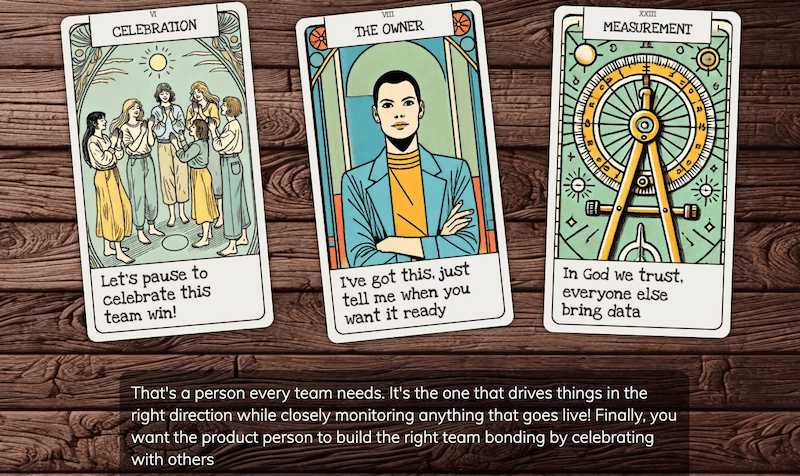
Exploring work behaviors that promote or block Lean thinking

On a chilly October night, the idea struck—a quirky way to explore work behaviors through the lens of lean thinking 🎃 🦇!
Imagine you walk into a tarot reader's den, only instead of love or fortune, each card reveals a work behavior. What would the cards say? What truths would they unveil? 👳🔮
In this post, we’re diving into the ways work behaviors shape collaboration and lean thinking. It's a playful look at identifying and discussing common workplace behaviors with your team. Don't worry - no real colleagues were hurt while writing this post.
Work Behaviors and Lean Thinking
In any collaborative setting, every interaction subtly shapes how we work and how the team functions as a whole. Each behavior, from a casual chat to a team-wide discussion, impacts how a company plans, adapts, and moves forward.
Lean thinking is especially sensitive to these dynamics, particularly when key players or those in authority exhibit influential behaviors. Here’s where we go from abstract to concrete.

For example, we all know about the HiPPO effect, where the Highest Paid Person's Opinion affects the resolution and decisions of a meeting. A HiPPO doesn't only bring a strong bias; it brings deep field knowledge field that could be useful in a meeting.
Essentially, HiPPOs need proper management to offer the best that they can do in a collaboration. The same stands true for each one of us. Maximizing how each one of us can help with our behaviors and traits efficiently, is what makes Lean Thinking better. Ignoring these behaviors breaks Lean Thinking.
There are more behaviors like HiPPO that either promote or block Lean Thinking. In most cases, these behaviors relate to a single person but there are cases where a behavior reflects how a team works.
Seeing a behavior is the first step to understanding it. Then acknowledgment, acceptance, and action will follow in enhancing or stopping that behavior.
Enter the Lean Tarot deck
With these ideas in mind, we created the Lean Tarot tool, a fun, insightful way to navigate and share work behaviors. The deck contains 26 cards, each symbolizing a unique behavior from “Inertia” (fear of change) to “Ownership” and “Micromanagement.”
Each card comes with a very characteristic phrase that you can hear when this behavior is expressed, a set of traits that characterize it, and a few ways to manage this behavior.
Use the tool to identify a behavior that relates to one of your colleagues and share a link or visit using your phone and share the relevant card during a physical meeting.

Finally, click on the closed deck of cards to deal with 3 random cards and check the Tarot reader advice. You can also explore specific personas' behavior.

Which of these match behaviors noticed at your work? Ask the Tarot Reader! 🔮

More articles to check

Assist your team's growth with our partnership program:








